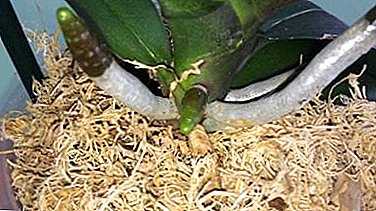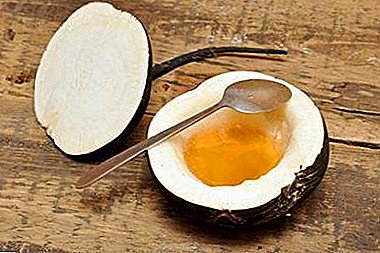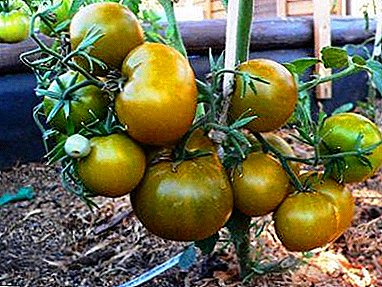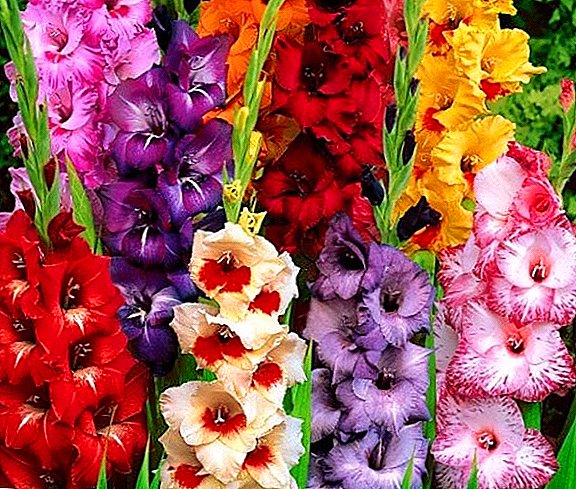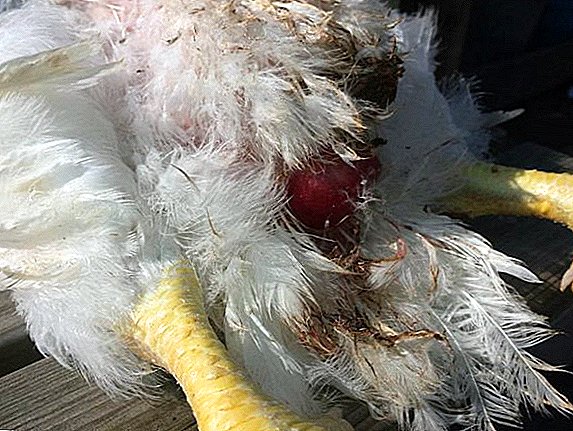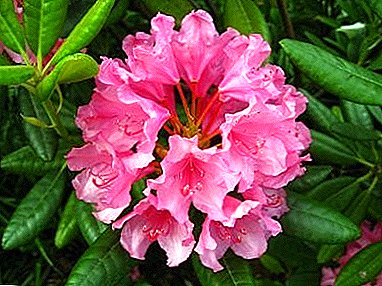
Azalea (or rhododendron) has long been considered an exclusively greenhouse plant. Only recently it became clear that some species tolerate winter well and even as severe as in the coldest parts of our country.
Frost-resistant types and varieties
All types of azaleas, which are able to winter in harsh Russian conditions, can be done on:
- deciduous;
- evergreen;
- semi-evergreens;
- hybrid.
All three groups are quite numerous, so each of them should be considered separately.
Deciduous
Winter-hardy deciduous species include:
Kamchatka Rhododendron - dwarf shrub with a maximum height of 20 to 30 cm and a width of 30 to 50 cm. All summer blooms with dark pink or raspberry-purple flowers with a diameter of 2.5 to 5 cm. There are also dark specks on the petals. Maintains falling of temperature to - 30 degrees. It grows slowly.
Pontic Azalea (or Rhododendron Yellow) - high branched shrub. In good conditions it grows very quickly up to 2 meters in height and width. It blooms in late spring or early summer simultaneously with the blooming of leaves (or in front). Small yellow or orange flowers are collected in lush inflorescences and have a strong and pleasant aroma. Feels good in winter at temperatures up to - 30 degrees. Most of the popular hybrid varieties of azaleas were bred from this species. Among them: "Cecile", "Satomi", "Fireworks", "Klondike" and many others.
Evergreens
Winter-hardy evergreen species include:
 Rhododendron katevbinsky. He was one of the first representatives of his kind, imported to Europe from North America. Since this variety is incredibly frost-resistant, it is widely used for breeding varieties that are resistant to cold conditions. Almost all the old varieties of winter-hardy rhododendrons lead their lineage from Ketewbinski. Kevbinsky varieties:
Rhododendron katevbinsky. He was one of the first representatives of his kind, imported to Europe from North America. Since this variety is incredibly frost-resistant, it is widely used for breeding varieties that are resistant to cold conditions. Almost all the old varieties of winter-hardy rhododendrons lead their lineage from Ketewbinski. Kevbinsky varieties:
- Grandiflorum is the most famous variety of Ketewbe origin. At the age of ten, the height of the bush is from 2 to 3 m. The color of flowers is lavender. Yellow-red markings are visible on the petals. There is no flavor. Allowable temperature drops range from -26 to -32 degrees.
- “Bowzalt” grows up to 3 m in height and 3.2 m in width. Lilac flowers with a diameter of 7 cm have reddish or brown spots. They have no flavor. The lowest possible temperature for a variety is from -29 to -32 degrees.
- "Album" is the highest. At the age of ten, shrub can grow up to 3.2 m in height. Sufficiently large (6 cm in diameter) flowers are painted white with green or brown markings, but have no aroma. Maintains frosts to - 32 degrees.
 Rhododendron Yakushiman. This plant is compact. The maximum height is 1 m, and the width is 1.5 m. It blooms profusely from May to June. The buds are pink, and the open flowers are white. Large enough - up to 6 cm in diameter. Loves organic-rich soil. Not as stable as the previous species, but nonetheless withstands frosts from -22 to -26 degrees, depending on the particular variety. It is desirable to cover young plants for the winter. The species includes many varieties: Astrid, Arabella, Fiction, Edelweiss, Kokhiro Vada and many others.
Rhododendron Yakushiman. This plant is compact. The maximum height is 1 m, and the width is 1.5 m. It blooms profusely from May to June. The buds are pink, and the open flowers are white. Large enough - up to 6 cm in diameter. Loves organic-rich soil. Not as stable as the previous species, but nonetheless withstands frosts from -22 to -26 degrees, depending on the particular variety. It is desirable to cover young plants for the winter. The species includes many varieties: Astrid, Arabella, Fiction, Edelweiss, Kokhiro Vada and many others.
Rodendron Caroline. This shrub is slightly larger than the previous one. Height - up to 1.5 m. Growing slowly too - up to 5 cm per year. Flowering begins in May-June and lasts about 3 weeks. Like light subacid soils. Maintains frosts to-30 degrees.
Semi-evergreen
These species shed their leaves in part.
 Daurian rhododendron. High (up to 2 m) and spreading (up to 1 m) shrub. Begins to bloom in mid-late spring until foliage appears. Very winter hardy. It withstands a decrease to -30 degrees, however, the spring frosts are very afraid. Flowers of medium size (diameter up to 4 cm) red-pink shade.
Daurian rhododendron. High (up to 2 m) and spreading (up to 1 m) shrub. Begins to bloom in mid-late spring until foliage appears. Very winter hardy. It withstands a decrease to -30 degrees, however, the spring frosts are very afraid. Flowers of medium size (diameter up to 4 cm) red-pink shade.
How to prepare for winter?
Prepare for winter frost need only deciduous azaleas. Other species winter well even without snow cover at a decrease to -25 degrees. The exception is the young bushes, which in the absence of snow will require artificial shelter.
 Deciduous azaleas are beginning to prepare for winter with the onset of autumn frosts. The branches are bent to the ground, but so that the kidneys do not touch it. This is done so that the plant as soon as possible is completely under the snow. Artificial shelters should not be removed until April, as bright sunlight doesn’t really suit a plant with frozen roots. However, with significant warming, extra snow should be removed, as it melts and creates too high soil moisture.
Deciduous azaleas are beginning to prepare for winter with the onset of autumn frosts. The branches are bent to the ground, but so that the kidneys do not touch it. This is done so that the plant as soon as possible is completely under the snow. Artificial shelters should not be removed until April, as bright sunlight doesn’t really suit a plant with frozen roots. However, with significant warming, extra snow should be removed, as it melts and creates too high soil moisture.
As an artificial shelter of rhododendron for the winter, metal nets with coniferous spruce branches and oak leaves are used.
Watering any azaleas during wintering is strictly prohibited. And since the beginning of autumn, if the flowering is over, watering is gradually reduced.
Not very hardy deciduous azaleas are also pruned. Cut need faded shoots and unblown buds.
Most rhododendron varieties tolerate wintering well. In order for the plant to grow well next year and to bloom profusely, you just need to know exactly what sort and type it belongs to.
A photo
More photos of winter-hardy azaleas see below:










